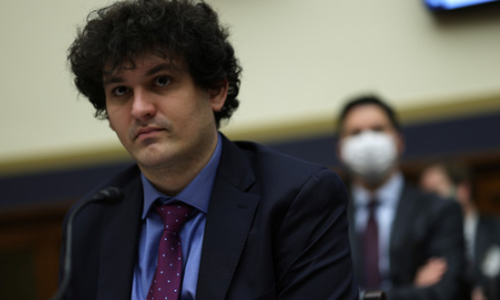Jury selection in the Sam Bankman-Fried trial begins on Tuesday this week, kicking off a trial that is expected to last about six weeks following the crypto firm’s historic $40 billion bankruptcy.
US prosecutors have labeled FTX “one of the biggest financial frauds in American history,” Financial Times noted in their trial preview this weekend. SBF stands accused not only to defrauding “dozens” of the world’s top investors, but also his millions of customers. The report also noted the trial will likely include “millions of pages of evidence” and testimony from SBF’s friends and romantic partners.
Prosecution is going to be tasked with trying to get seven different charges, including conspiracy to commit money laundering and fraud against lenders, investors and customers, to stick, the report notes. They will try to show that Bankman-Fried collaborated covertly to channel billions from FTX customers to his cryptocurrency trading company, Alameda Research.
Funds were then spent on luxury property, political contributions and high-profile advertising.
As the report notes, four people who used to work under Bankman-Fried have already admitted guilt. Caroline Ellison, who was previously the CEO of Alameda and was once romantically involved with SBF, is anticipated to be a key witness in the case.

If the trial goes the distance and SBF doesn’t admit guilt, plea out or settle prior to trial, the defense is slated to cast blame on others, including Ellison. SBF has claimed to be uninformed about the financial mechanisms that were operating behind the curtain of his business empire, insisting that he had no intention of committing fraud.
Sarah Paul, a former federal prosecutor and partner at law firm Evershed Sutherland told Financial Times: “This is a hugely important case. This is the biggest trial we have seen in the crypto world. If there is not justice here for the victims, I think it will be a real blow. And I think it’s dangerous. You have to get bad actors like this out of the industry.”
She continued: “I think the government’s case looks extremely strong. They have multiple co-operating witnesses who worked very closely with him and are going to say that they committed a crime with him. It’s hard to imagine that doesn’t carry the day here.”
If it does make it to trial, one key question will be whether SBF takes the stand. Bradley Simon, a criminal defense partner at Schlam Stone & Dolan, told Financial Times: “It would be foolhardy for Bankman-Fried to testify. He’s shown himself to be very erratic. Presumably his counsel are telling him that’s out of the question. But sometimes clients don’t listen.”
Simon added: “This is a young man who I don’t think is going to generate a lot of sympathy. He was a high roller. There are going to be jurors from every walk of life. I don’t think they are going to relate to him very well. But you never know. All it takes is one juror to hold out and then everything for the government goes down in flames.”
Meanwhile, over the weekend, short seller Jim Chanos lashed out at author Michael Lewis after Lewis made comments on a 60 Minutes interview seemingly defending Bankman-Fried and comparing the fall of FTX to a bank run.
This was literally Enron’s defense. “If it wasn’t for those meddling short-sellers and journalists causing a run-on-the-bank, we would’ve been fine.” This is nonsense, as both FTX and Enron were both massively insolvent, not illiquid. https://t.co/3nrJqUrYCg
— Diogenes (@WallStCynic) October 2, 2023
Lewis said during the interview that the fall of FTX left a “Sam Bankman-Fried-shaped hole in the world.” Lewis, who apparently does not seem to understand that FTX was nothing more than a Ponzi scheme, also claimed that “if there hadn’t been a run on customer deposits, they’d still be sitting there making tons of money.”
“This was literally Enron’s defense. ‘If it wasn’t for those meddling short-sellers and journalists causing a run-on-the-bank, we would’ve been fine.’ This is nonsense, as both FTX and Enron were both massively insolvent, not illiquid,” Chanos responded on X/Twitter, over the weekend.
As MarketWatch correctly noted on Monday, a crucial distinction between illiquidity and insolvency lies in the quality of assets a company holds. An illiquid business possesses high-quality assets that it can either liquidate or use to secure loans, whereas an insolvent one lacks such assets. Prior to its downfall, Alameda Research had a balance sheet laden with (now worthless) FTT tokens, according to reports by CoinDesk.
Now let’s see if a jury can understand the difference…
Loading…
https://www.zerohedge.com/markets/usa-vs-sbf-jury-selection-sam-bankman-fried-trial-begin-tuesday

